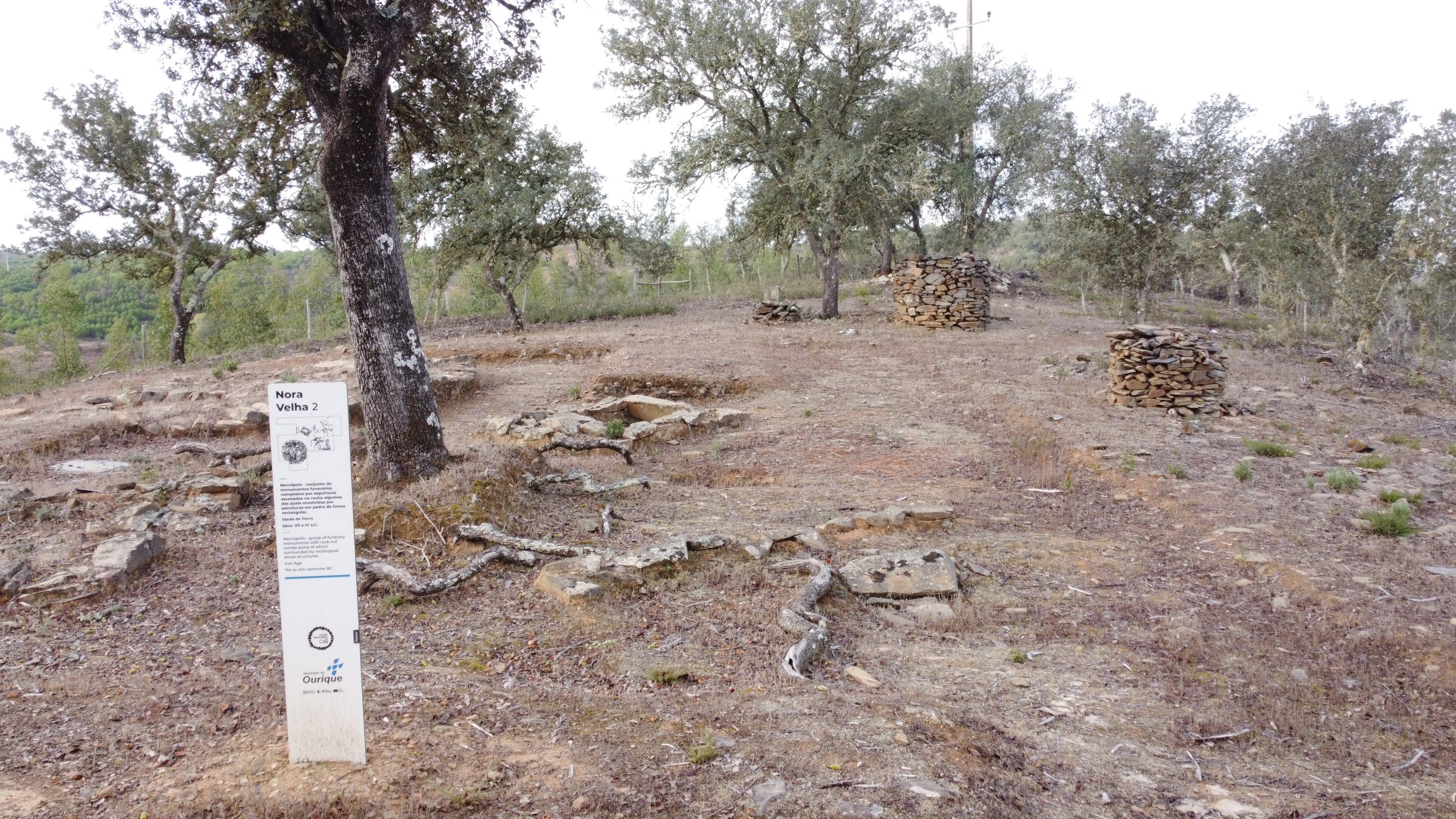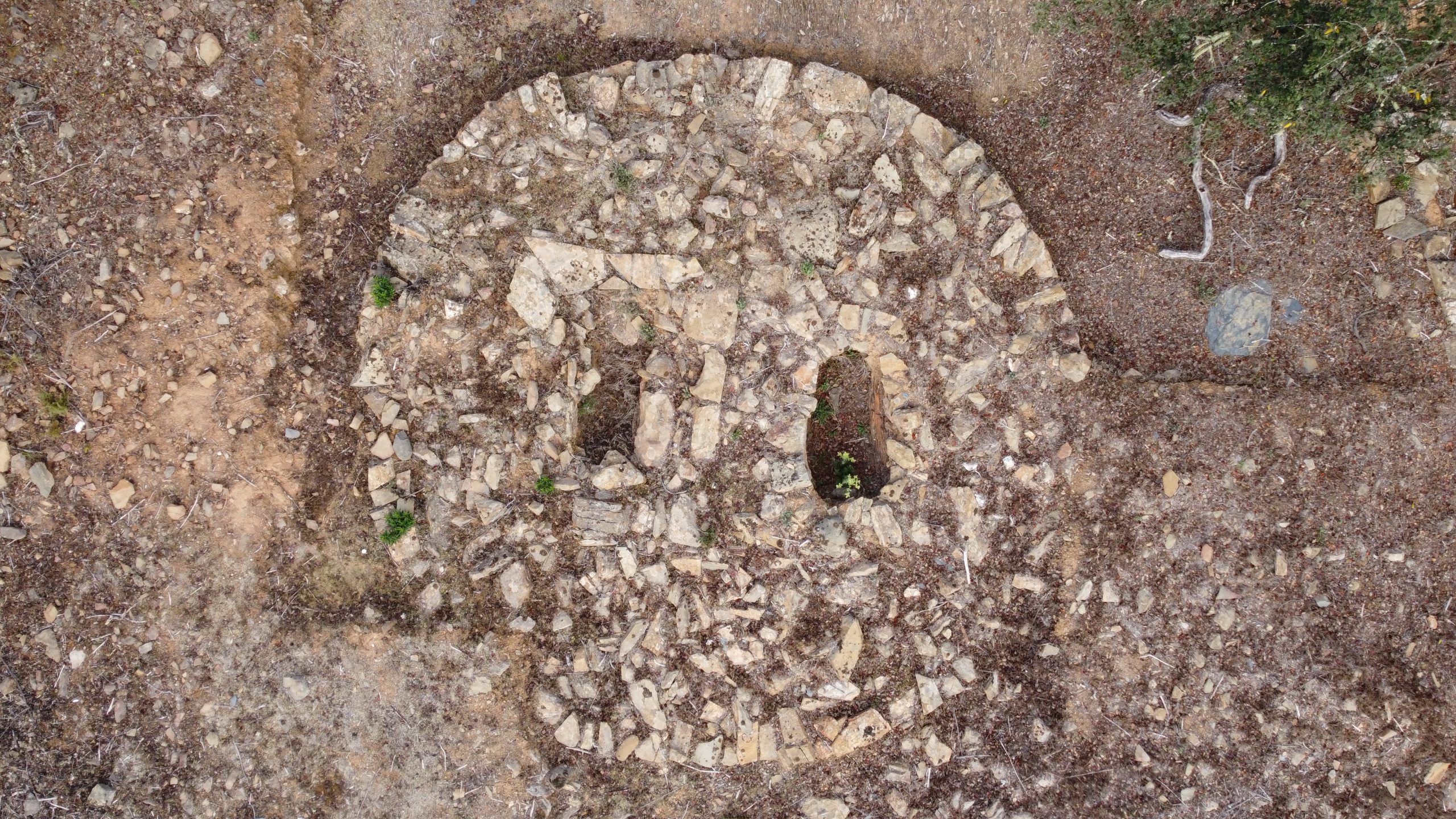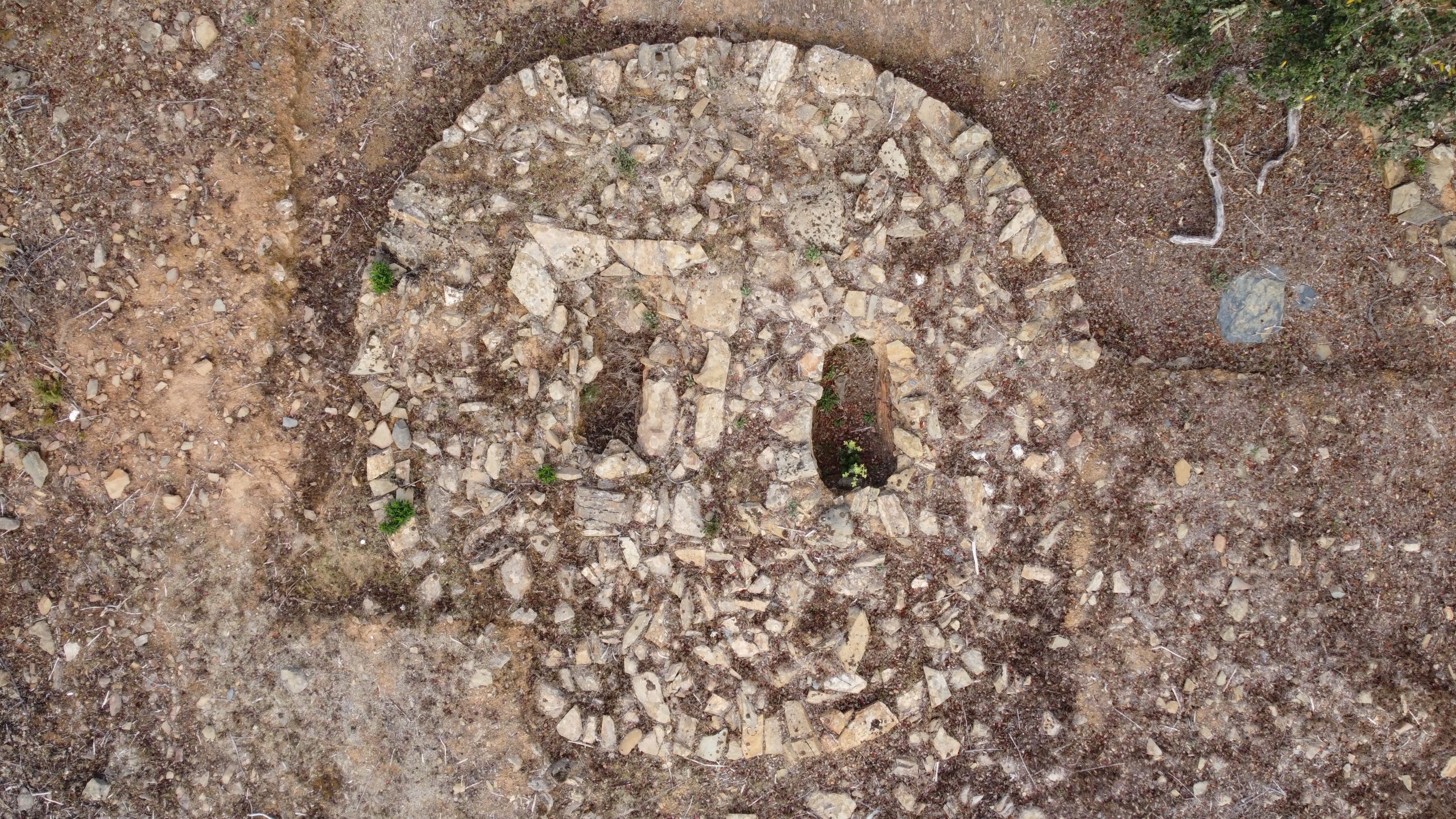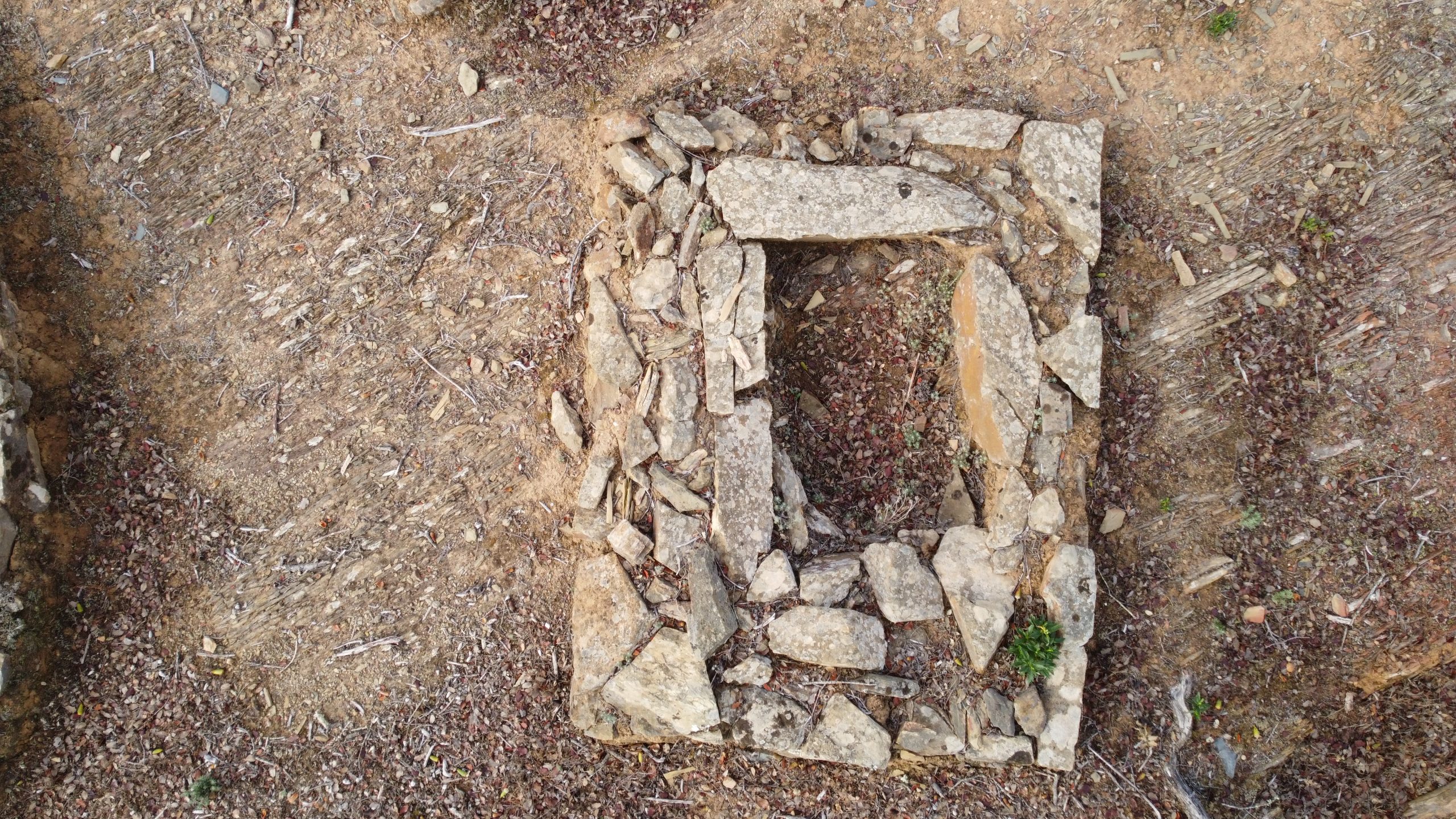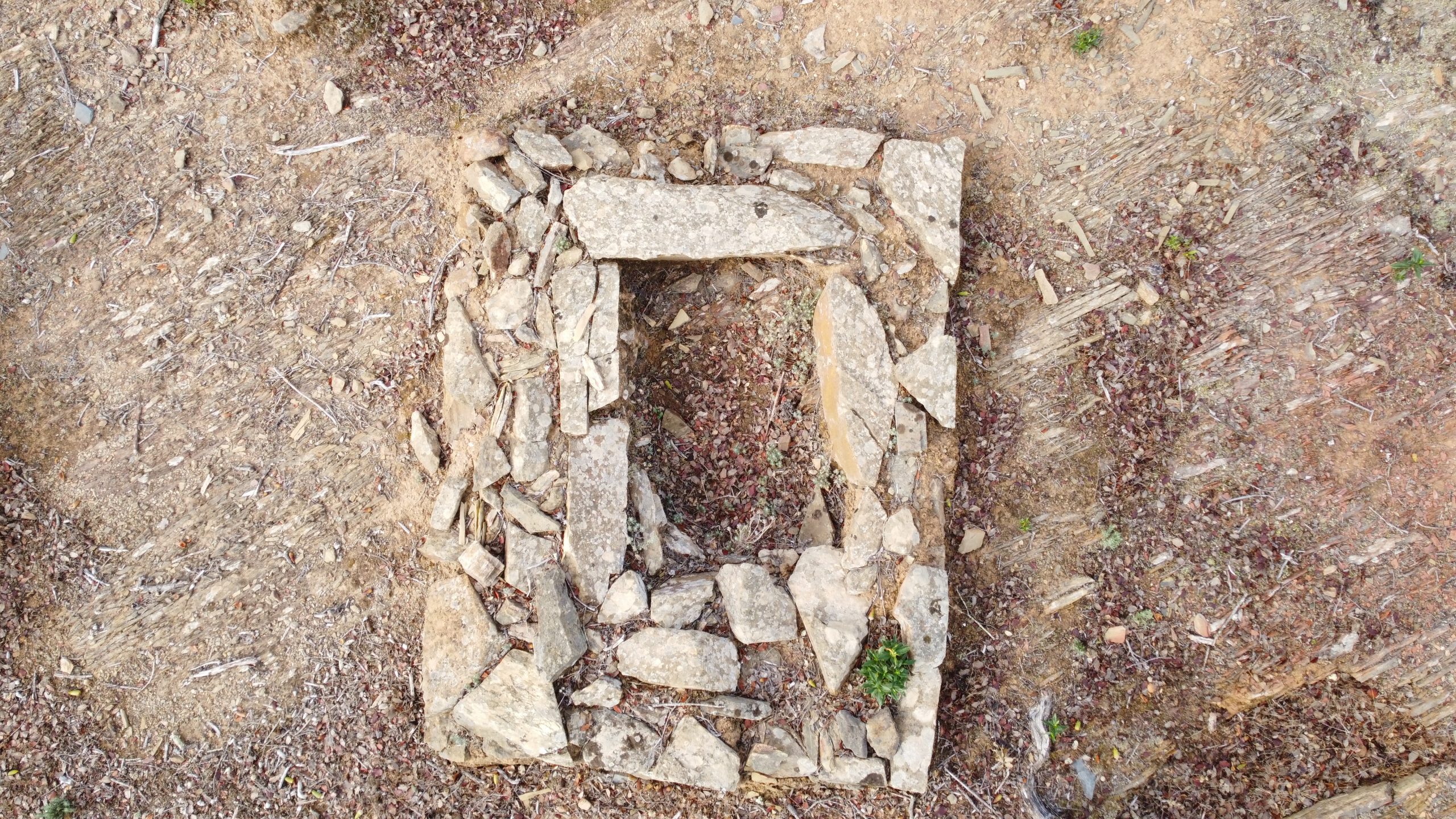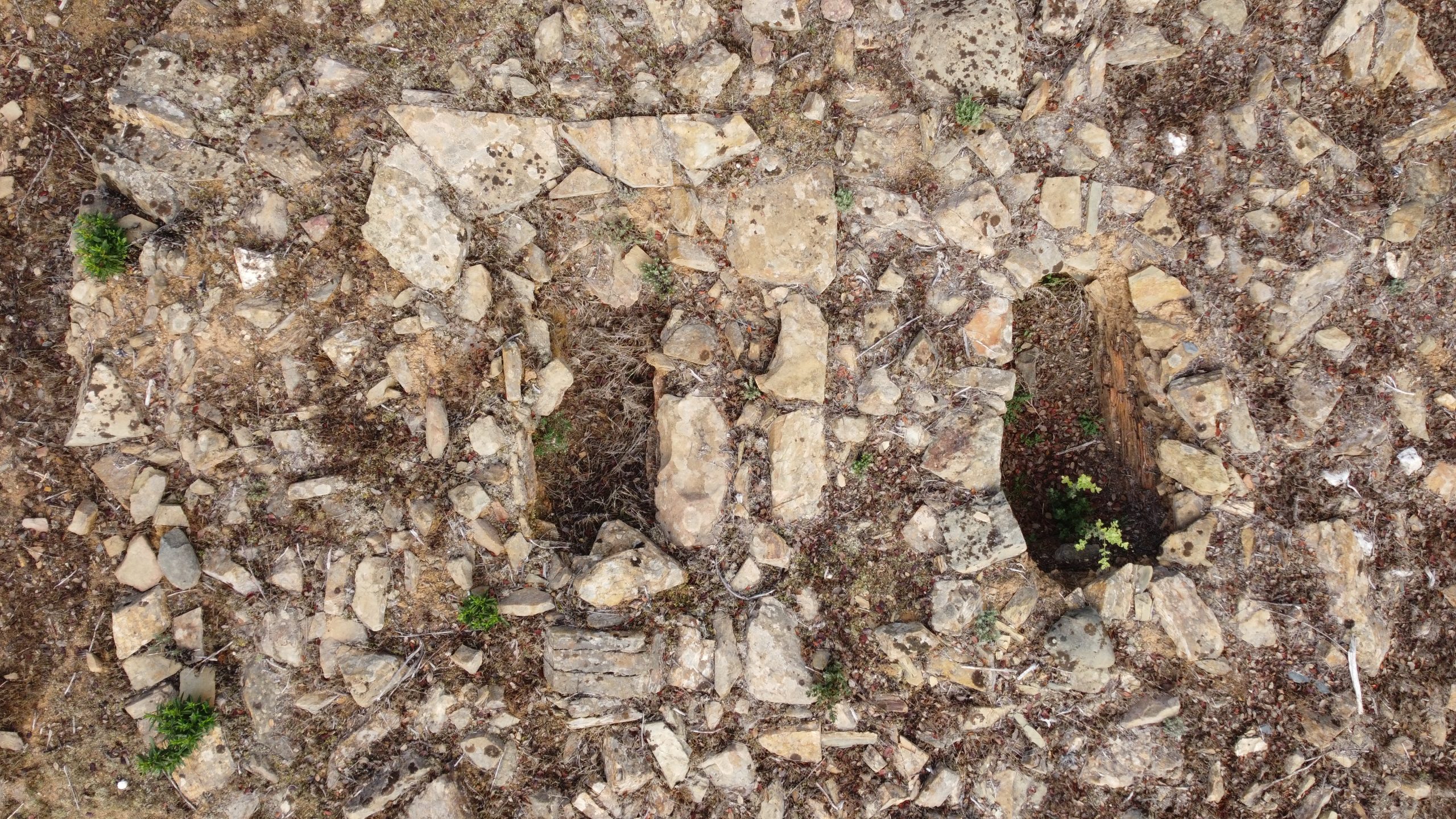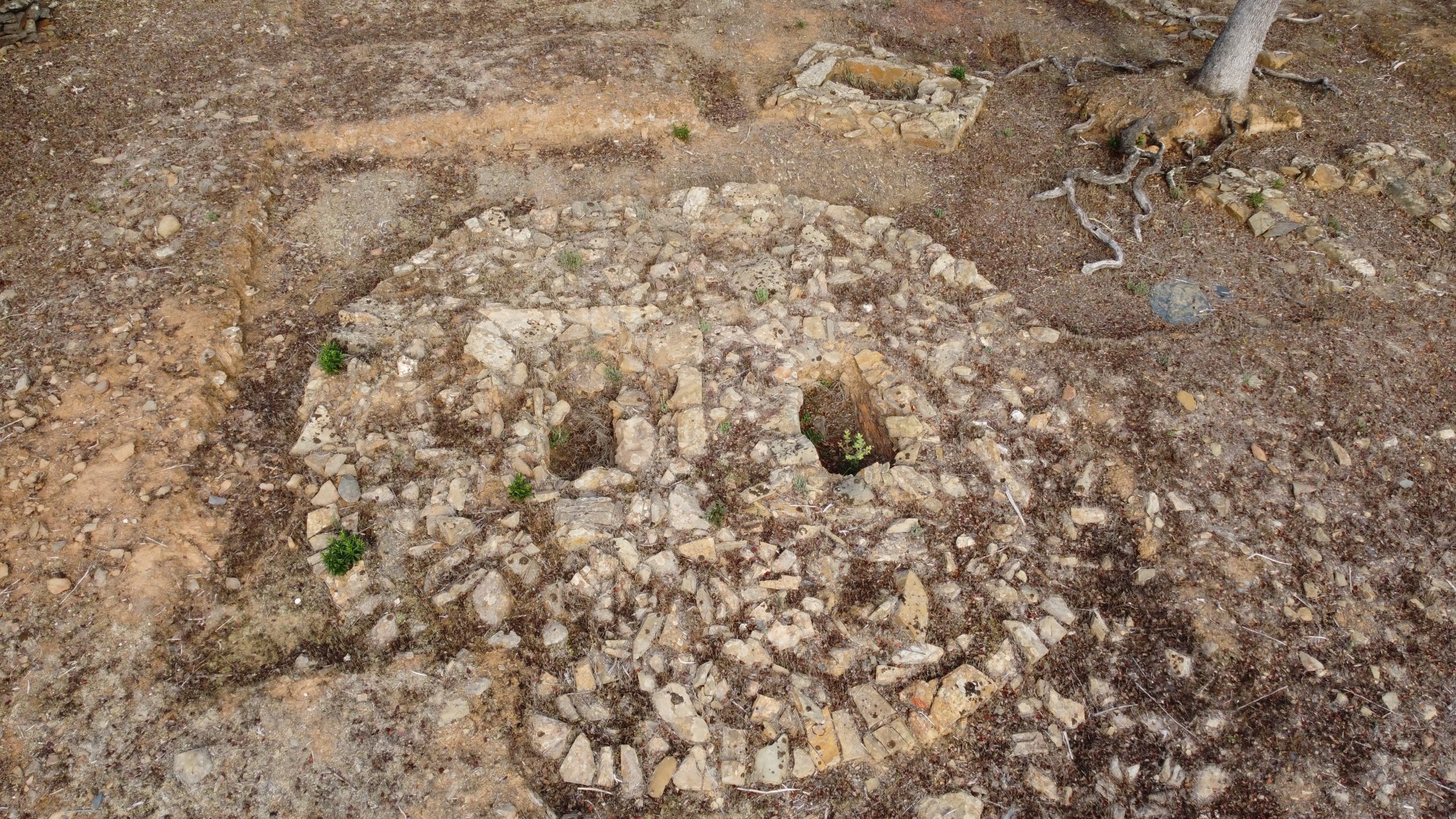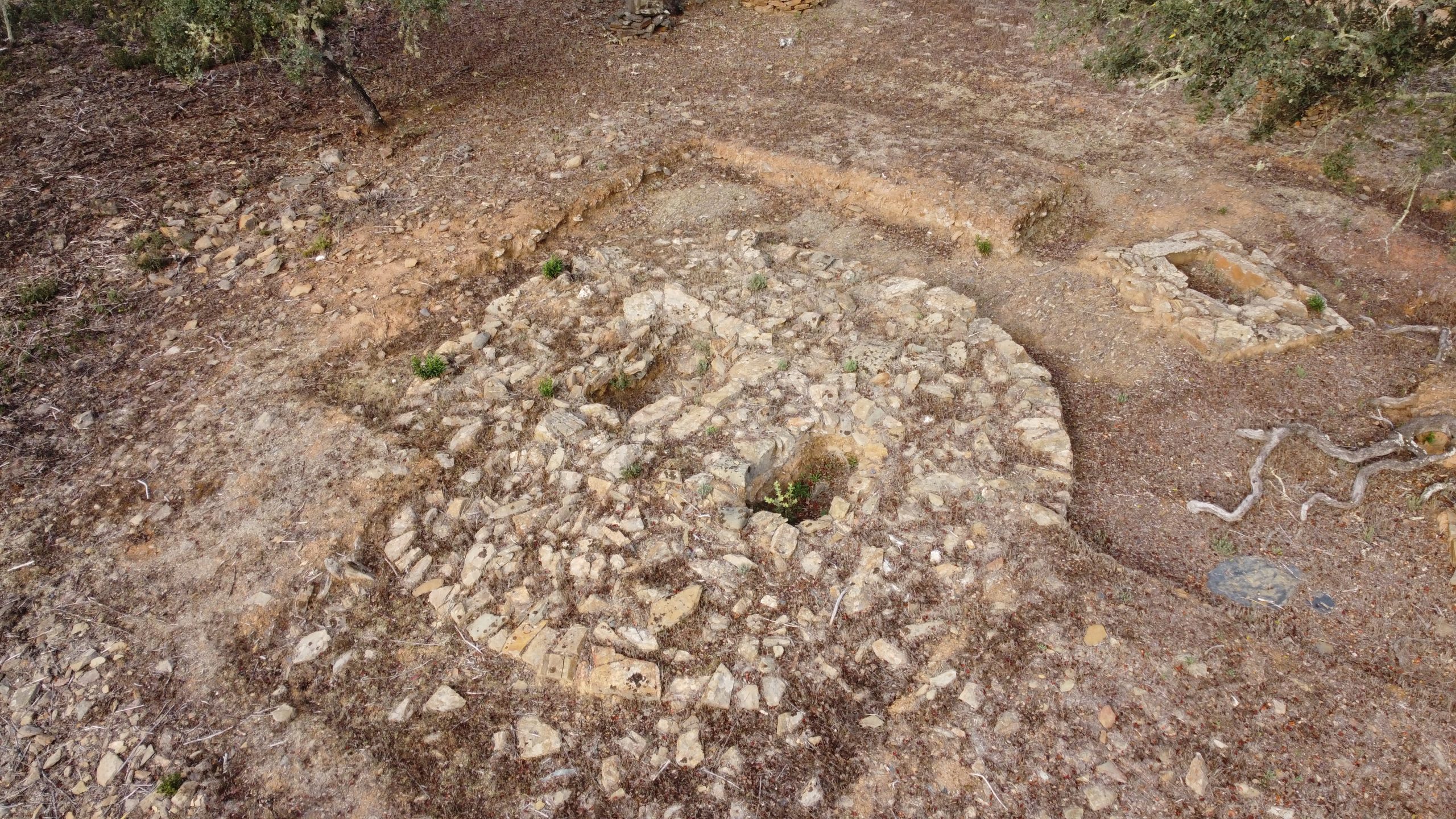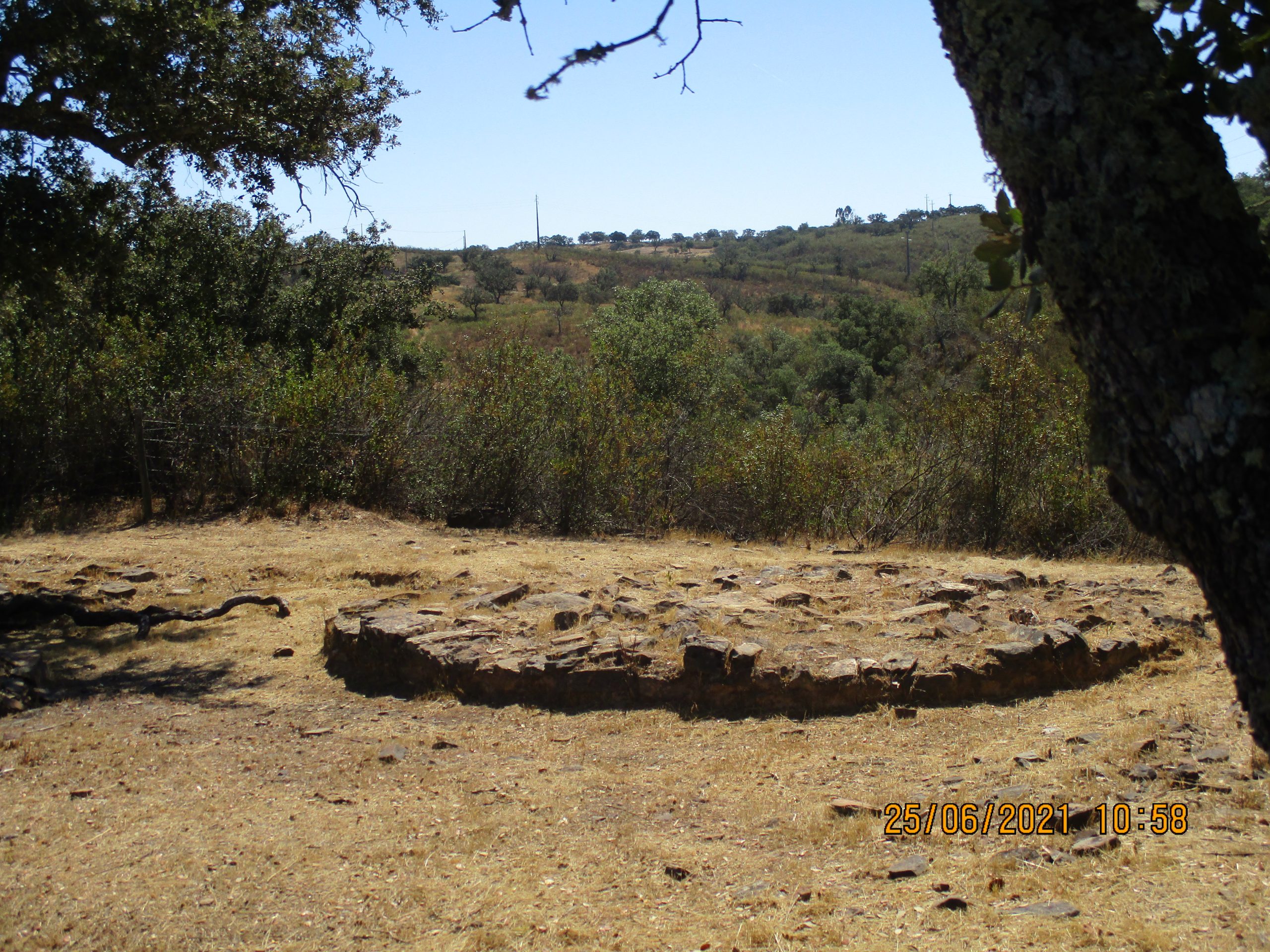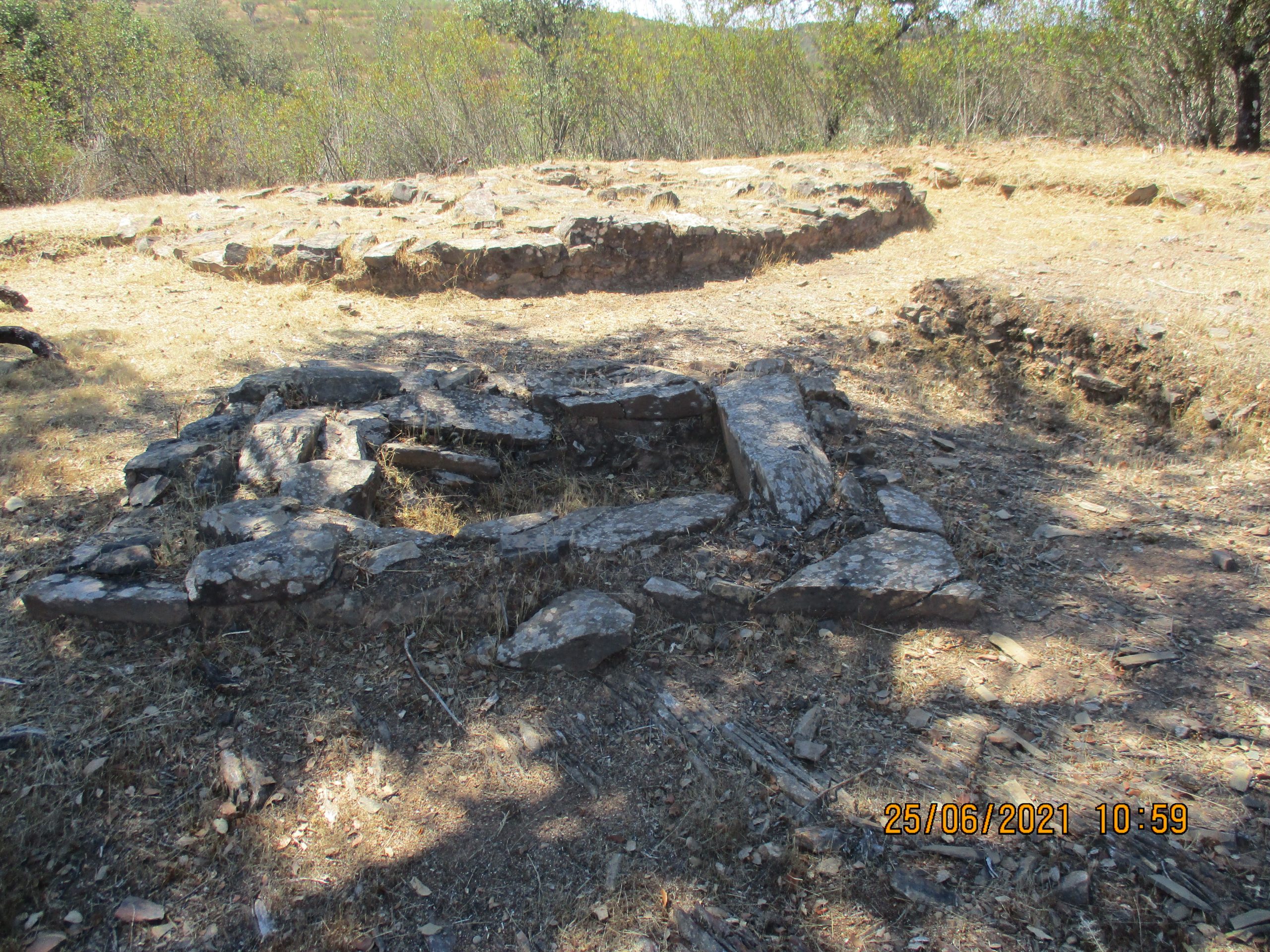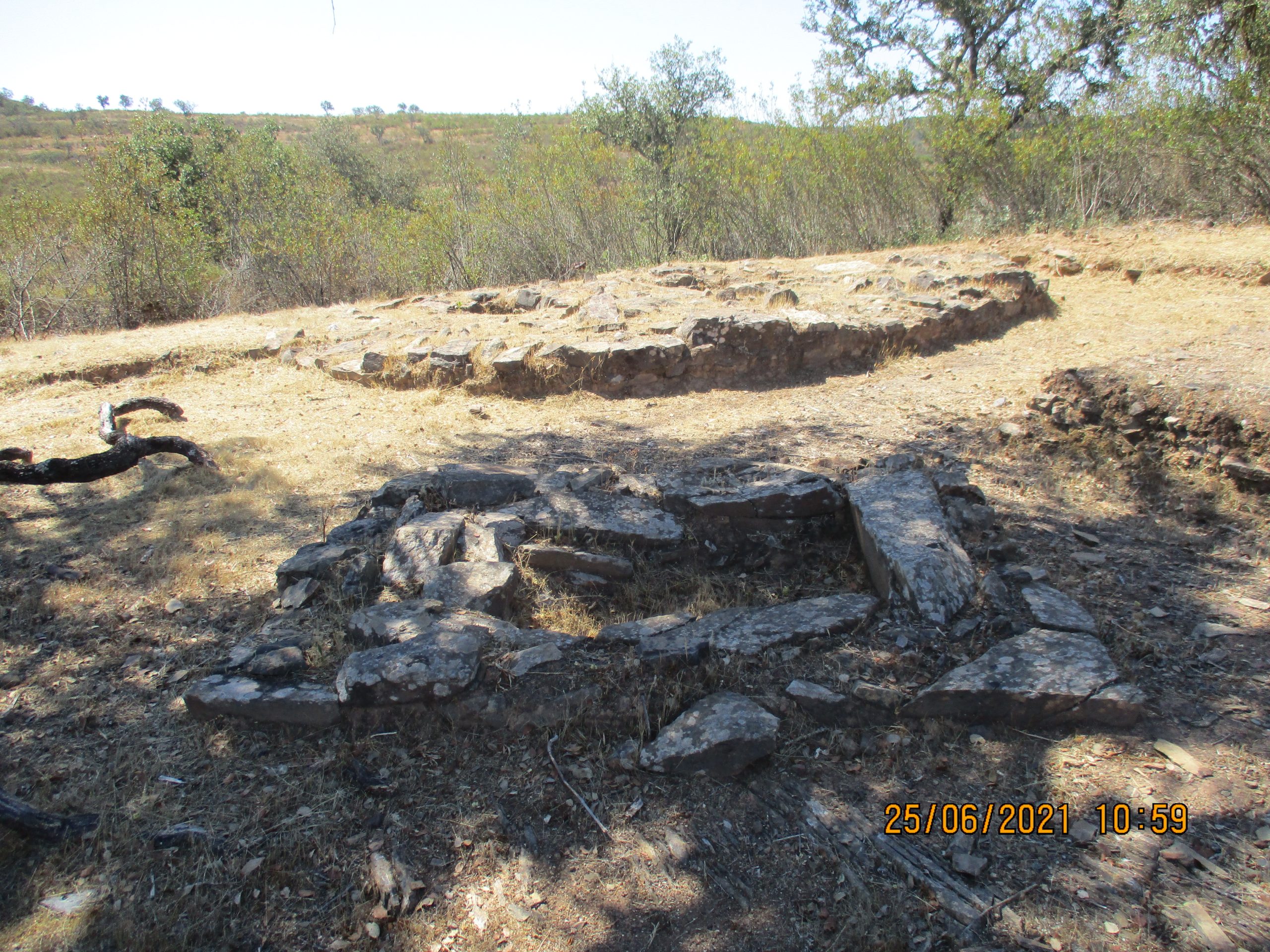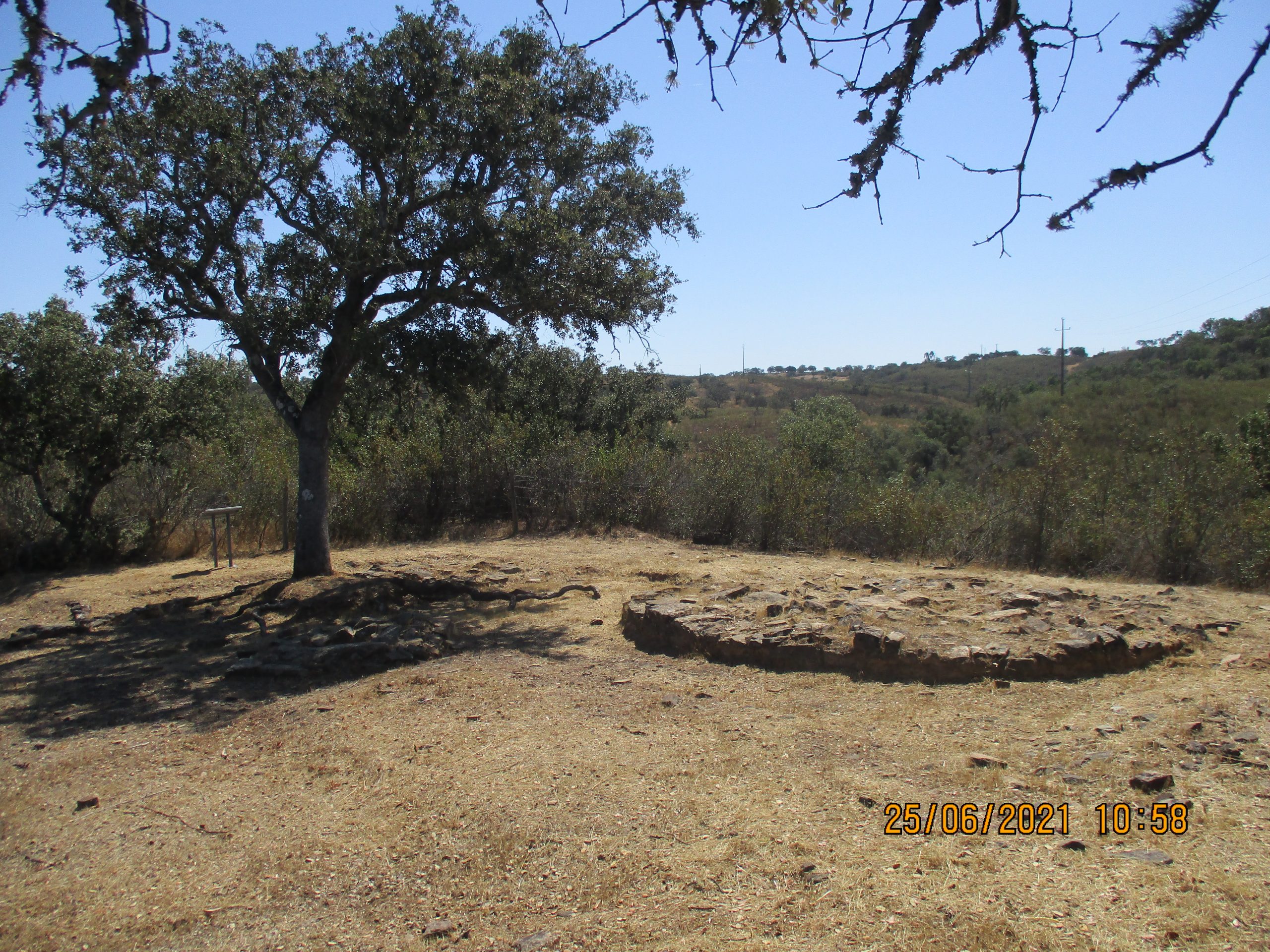Archaeological Circuit of Castro da Cola, Ourique
Nora Velha 2
37º34'40.40"N / 8º17'35.63"O
Free access
Reception and Interpretation Centre
Visits to this centre are free.
It closes on Tuesdays and Wednesdays, January 1, Easter Sunday, and December 25.
Summer (May 1 to September 15) – 9.30 a.m.-12.30 p.m. / 3 p.m.-6.30 p.m.
Winter (September 16 to April 30) – 9.30 a.m.-12.30 p.m. / 2 p.m. -5.30 p.m.
About
Nora Velha 2
The site of Nora Velha 2, located approximately 200 meters to the Northwest of the Nora Velha 1 Tholos and around 700 meters from Castro da Cola, is an incineration necropolis associated with the Iron Age settlement that existed around Castro da Cola, between the late 9th century B.C. and the beginning of the 5th century B.C. This means that the funerary ritual practised in this necropolis consisted of cremating the bodies, depositing the ashes and bone remains in ceramic urns, and placing them in pits.
This necropolis, identified and excavated in the 1990s, is composed of four pit-style graves carved in the rock outcrop, two other orthogonal graves built with local stone and a large circular structure containing two small tomb structures, also with orthogonal plans.
Access
Prepare your visit
The archaeological circuit has a Reception and Interpretation Centre near the Church of Nossa Senhora da Cola. It can be visited by people with reduced mobility (wheelchairs, baby strollers).
For more information, contact
colaassociacao@gmail.com / cacmb.ourique@gmail.com
Jorge Silva – 963090894
Reduced mobility
The archaeological site of Alcaria 2 is not accessible to people with reduced mobility (wheelchairs, baby strollers), and there are no guided tours available.
Children should always be accompanied by a responsible adult.
Cautionary Note
Access to this archaeological site is facilitated by the owner of the land where it is located. Keep that in mind when you visit the site, respecting it and contributing to its cleanliness, maintenance, and preservation.
Support

RESEARCH
Bibliography & useful links
CORREIA, Susana; ALFENIM, Rafael (2001). Circuito Arqueológico da Cola. In Património / Estudos, n.º 1, Instituto Português do Património Arquitetónico, Lisboa, pp. 53-54.
CORREIA, Virgílio Hipólito (1993). As necrópoles da Idade do Ferro do Sul de Portugal. Arquitectura e rituais. In Actas do 1º Congresso de Arqueologia Peninsular, Porto, pp. 351-376. Disponível em: Consultar Artigo Completo → [Consultado a 2 de maio de 2023].
CORREIA, Virgílio Hipólito (1999). Algumas considerações sobre os centros de poder na Proto-História do Sul de Portugal. In Revista de Guimarães, Volume especial – Actas do Congresso de Proto-História Europeia, Sociedade Martins Sarmento, Guimarães, pp. 699-714. Disponível em: Consultar Artigo Completo → [Consultado em 02/06/2023].
CORREIA, Virgílio Hipólito; PARREIRA, Rui (2002). Roteiros da Arqueologia Portuguesa, 8 – Cola. Circuito Arqueológico. Instituto Português do Património Arquitectónico (IPPAR), Lisboa, pp. 60-61.
RAPOSO, Jorge (2001). Sítios arqueológicos visitáveis em Portugal. In Almadan. 2ª série: 10, Almada, pp. 100-157. Disponível em: Consultar Artigo Completo → [Consultado a 22 de março de 2023].
SOARES, Rui Monge; MARTINS, Artur (2013). A necrópole da Nora Velha 2 (Ourique). Novos dados e interpretações 20 anos após a sua escavação. In ARNAUD, José Morais; MARTINS, Andrea; NEVES, César, coord., Arqueologia em Portugal. 150 Anos. Associação dos Arqueólogos Portugueses, Lisboa, pp. 661-669. Disponível em: Consultar Artigo Completo → [Consultado a 2 de maio de 2023].
SOARES, António M. Monge; ARRUDA, Ana Margarida (2017). A cronologia de radiocarbono para a Idade do Ferro Orientalizante no território português. Uma leitura crítica dos dados arqueométricos e arqueológicos. In BARCELÓ, J. A.; BOGDANOVIC, I.; MORELL, B. (eds.), IberCrono 2016, Cronometrías para la Historia de la Península Ibérica (Chronometry for the History of the Iberian Peninsula). Actas del Congreso de Cronometrías para la Historia de la Península Ibérica, Barcelona, 17-19 de octobre 2016, CEUR, Barcelona, pp. 235-259. Disponível em: Consultar Artigo Completo → [Consultado em 23/05/2023].
https://www.patrimoniocultural.gov.pt/pt/patrimonio/itinerarios/alentejo-algarve/02/
https://arqueologia.patrimoniocultural.pt/index.php?sid=visitaveis&subsid=52888
https://arqueologia.patrimoniocultural.pt/index.php?sid=sitios&subsid=52888
http://www.cm-ourique.pt/pt/menu/322/circuito-arqueologico-da-cola.aspx

